Reserve personnel 16,200 Budget 6.971 billion EUR (2016) Minister of defense María Dolores de Cospedal | Percent of GDP ~0.62% (2016) Military age 18 | |
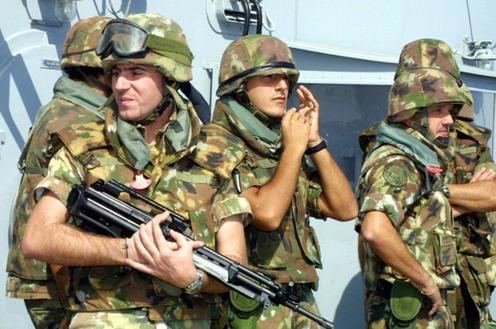 | ||
Supreme Commander Captain generalH. M. Felipe VI Minister of Defence María Dolores de Cospedal Active personnel 132,798 military and 92,692 Civil Guards Service branches Similar Spanish Air Force, Spanish Army, Spanish Legion, Spanish Navy, Tercio | ||
Spanish military power day of the spanish armed forces proud of them all
The Spanish Armed Forces (Spanish: Fuerzas Armadas Españolas, FFAA) are the military forces of the Kingdom of Spain. The Spanish Armed Forces are a modern military force charged with defending the Kingdom's integrity and sovereignty. They consist of the Army, Navy and Air Force. The King is the Commander-in-Chief of the armed forces, with the title Capitán General de las Fuerzas Armadas (Captain General of the Armed Forces). The current Chief of the Defence Staff is General admiral Fernando García Sánchez. The Spanish Armed Forces are active members of NATO, the Eurocorps, the European Union Battlegroups, and also provide peace keeping troops to the United Nations.
Contents
- Spanish military power day of the spanish armed forces proud of them all
- Spanish armed forces demonstration 2017 full hd
- History
- Today
- Army
- Spanish Navy
- Infanteria de Marina
- Spanish Air Force
- Spanish Royal Guard
- Spanish Military Emergencies Unit
- References
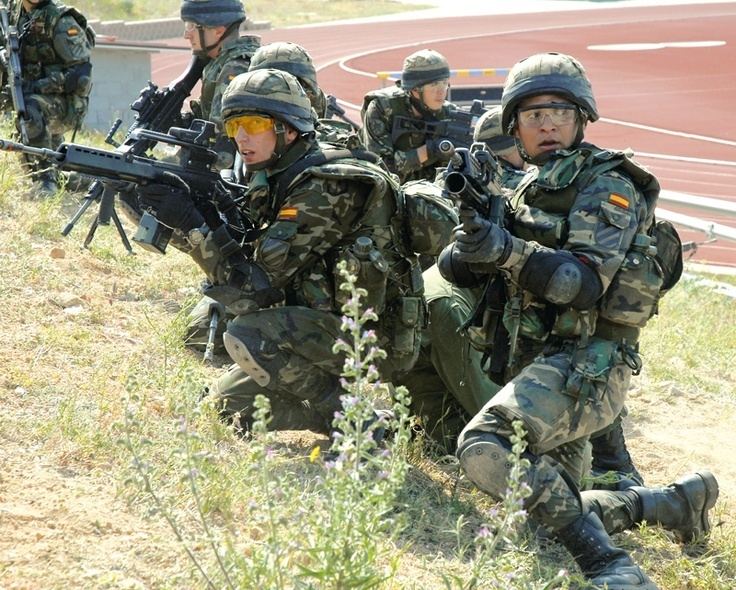
Spanish armed forces demonstration 2017 full hd
History
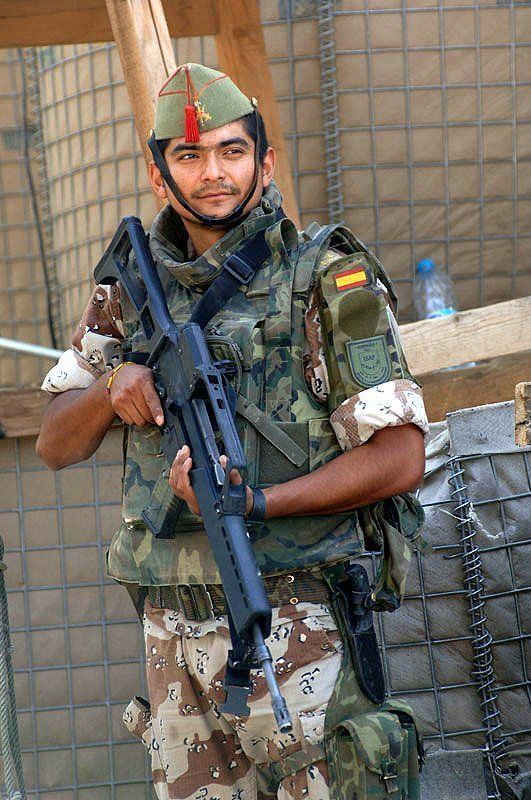
During the 15th and 16th century, Spain evolved into Europe's foremost power with the voyages of Christopher Columbus leading to Spain acquiring vast lands in the Americas. During the reign of Charles V and Philip II, Spain reached the peak of its power with the Spanish Empire spanning 19.4 million square km of the earth's surface, a total of 13%. By the mid 17th century this power had been weakened by the Thirty Years War along with financial problems, and the lack of reforms.
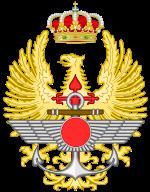
During the 18th century the new Bourbon dynasty revived Spain's economic and military power through a series of important reforms in the armed forces and the economy, notably those of Charles III of Spain. Thanks to these reforms, Spain performed well in the French Revolutionary Wars, the war of Jenkins' Ear, the war of Austrian Succession and several other engagements.
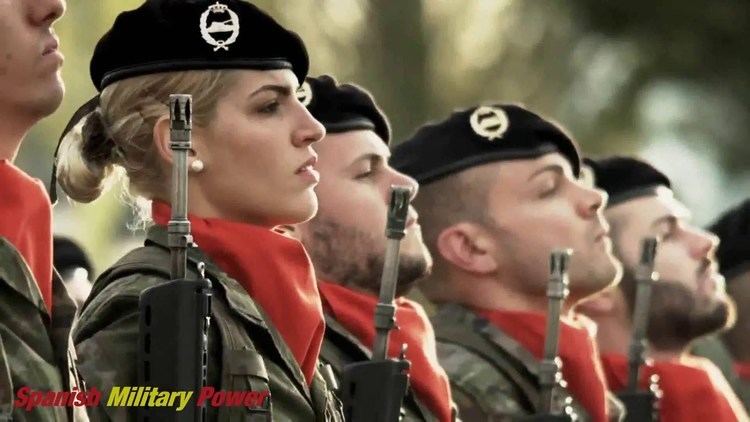
The occupation of a great part of Spain by the French during the Napoleonic Wars resulted in the so-called war of Spanish independence, which was characterised by use on a large scale of guerrilla troops, made necessary by the war's devastating effect on the Spanish economy. Following the war, the Spanish military was in poor condition and political instability resulted in the loss of most of Spain's former colonies, except Cuba, Puerto Rico, and the Philippines. These too would be lost later in the Spanish–American War.
Today
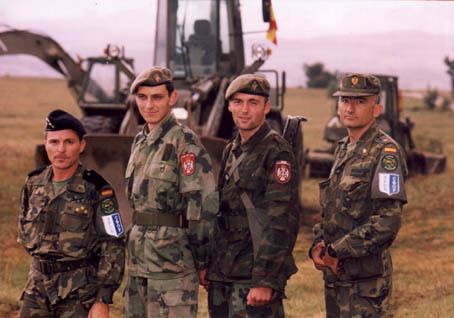
The Spanish armed forces are a professional force with a strength in 2012 of 123,300 active personnel and 16,400 reserve personnel. The country also has the 80,000 strong Civil Guard which comes under the control of the Ministry of Defence in times of a national emergency. The Spanish defence budget is 5.71 billion euros (7.2 billion USD) a 1% increase for 2015. The increase comes because of security concerns in the country.
Army
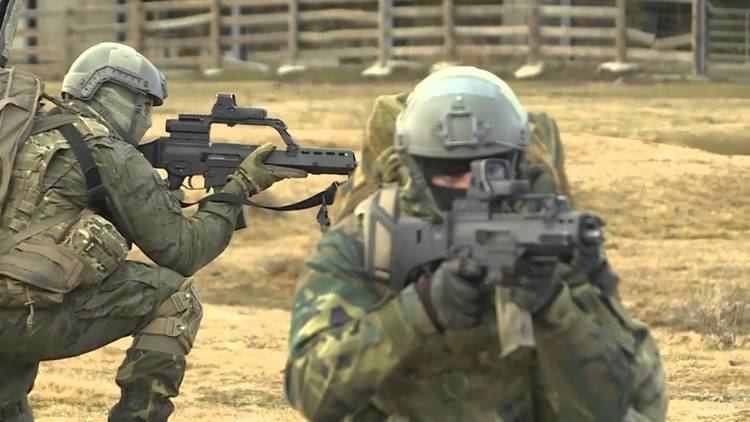
The Spanish army consists of 15 active brigades and 6 military regions. Modern infantry have diverse capabilities and this is reflected in the varied roles assigned to them. There are four operational roles that infantry battalions can fulfil: air assault, armoured infantry, mechanised infantry, and light role infantry. The Spanish army has the latest technology at its disposal to preserve the territorial integrity of the Kingdom of Spain.
Spanish Navy
Under the command of the Spanish Chief of Naval Staff, stationed in Madrid, are four area commands:
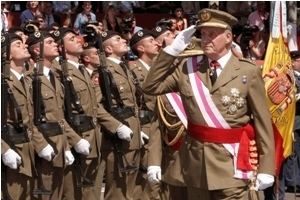
The current flagship of the Spanish Navy is the amphibious assault ship Juan Carlos 1 which is also used as an aircraft carrier. In addition, the fleet consists of: 2 amphibious transport docks, 11 frigates, 3 submarines, 6 mine countermeasure vessels, 23 patrol vessels and a number of auxiliary ships. The total displacement of the Spanish Navy is approximately 220,000 tonnes. As of 2012, the Armada has a strength of 20,800 personnel.
Infanteria de Marina
The Infanteria de Marina are the marine infantry of the Spanish Navy, the oldest in the world. It has a strength of 5,000 troops divided into base defense forces and landing forces. One of the three base defense battalions is stationed with each of the Navy headquarters. "Groups" (midway between battalions and regiments) are stationed in Madrid and Las Palmas de Gran Canaria. The Tercio (fleet — regiment equivalent) is available for immediate embarkation and based out of San Fernando. Its principal weapons include light tanks, armored personnel vehicles, self-propelled artillery, and TOW and Dragon antitank missiles.
Spanish Air Force
Spain currently has 10 fighter squadrons, each with 18-24 airplanes. The air force also has 15 operational air bases around the country. The air force operates a wide-ranging fleet of aircraft, from fighters to transport aircraft and passenger transports to helicopters. It maintains some 450 aircraft in total, of which around 130 are fighter aircraft, including a number of Eurofighter Typhoons. The Spanish Air Force is replacing older aircraft in the inventory with newer ones including the recently introduced Eurofighter Typhoon and the Airbus A400M Atlas airlifter. Both are manufactured with Spanish participation; EADS CASA makes the Eurofighter's right wing and leading edge slats,and participates in the testing and assembly of the airlifter. Its aerobatic display team is the Patrulla Aguila, which flies the CASA C-101 Aviojet.Its helicopter display team, Patrulla Aspa, flies the Eurocopter EC-120 Colibrí. In July 2014 the Spanish Air Force joined the European Air Transport Command, headquartered at Eindhoven Airbase in the Netherlands.
Spanish Royal Guard
The Royal Guard (Guardia Real) is an independent unit of the Spanish Armed Forces whose primary task is the military protection of the King of Spain and the Spanish Royal Family. It also protects visiting Heads of State.
The Royal Guard's history dates back to medieval times, the Corps of Gentlemen of the Chamber, the "Monteros de Espinosa", dating to 1006.
It currently has a strength of 1,900 troops, constituting a fully functional combat unit drawn from the ranks of all three branches of the Spanish Armed Forces: among others, a Royal Marines company, a Paratroop company and an infantry company. Some units have served recently in Afghanistan and Bosnia.
Spanish Military Emergencies Unit
The Military Emergencies Unit (Spanish: Unidad Militar de Emergencias, is the most recently instituted branch of the Spanish Armed Forces, resulting from a decision of the Council of Ministers of Spain in 2005.
In addition to headquarters staff (Unidad de Cuartel General, there are five emergency intervention battalions (Batallon de Intervención en Emergencias, BIEM), a support regiment (Regimiento de Apoyo a Emergencias) and an aerial group (Agrupación de Medios Aéreos).
It is responsible for providing disaster relief principally throughout Spain but also if necessary abroad. The activities including handling natural hazards such as floods and earthquakes, forest fires, chemical and nuclear accidents, and other emergy situations recognized as such by the Prime Minister of Spain.
